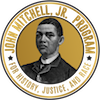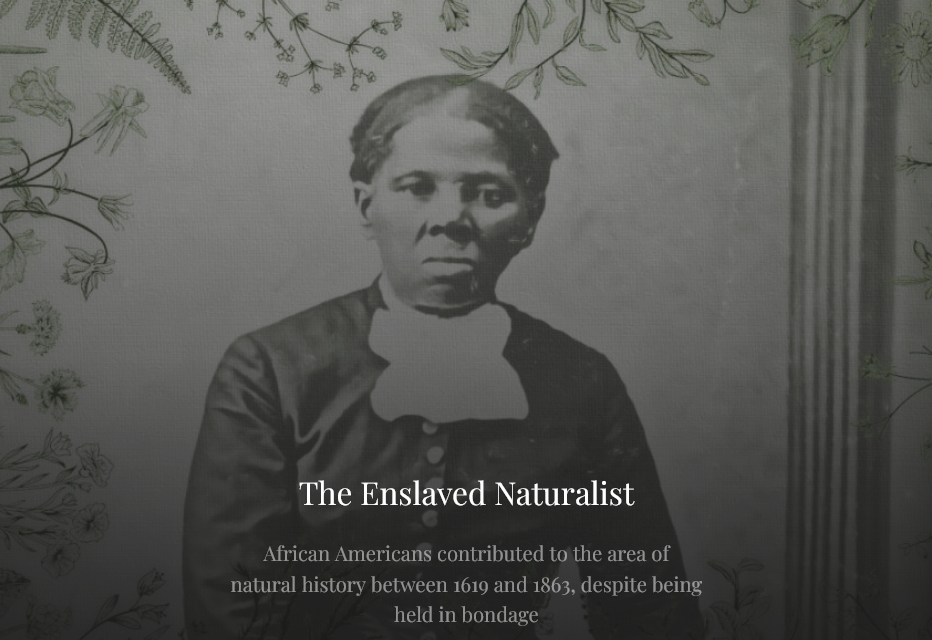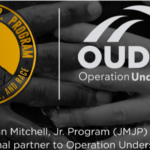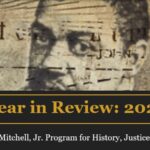George Mason University’s Mitchell Program & ESP Department release new digital exhibit:
FOR IMMEDIATE RELEASE
Contact: Jack Del Nunzio (jmjp@gmu.edu)
Exhibit Link: https://jmjp.gmu.edu/exhibits/enslaved-naturalist-landing/
December 14, 2021 | Arlington, VA — Mason scholars from the John Mitchell, Jr. Program for History, Justice, and Race at the Jimmy and Rosalynn Carter School for Peace and Conflict Resolution (Carter) and the Environmental Science and Policy Department (ESP) have teamed up to create an online exhibit highlighting and acknowledging the hidden history of enslaved naturalists. Dr. Charles Chavis (Carter) and Dr. Travis Gallo (ESP) were awarded a $20,000 grant from the National Park Service’s 400 Years of African American History Commission to research, design, and create The Enslaved Naturalist exhibit. Housed in the John Mitchell, Jr. Program Digital Museum, The Enslaved Naturalist is the Mitchell Program’s flagship exhibit, curated by Drs. Chavis and Gallo, Laura Brannan, and Ajanet Rountree. It is buoyed by original research and scholarship, alongside oral history interviews with Pauline Copes Johnson (Great-Great-Grandniece of Harriet Tubman), Rita Daniels (Great-Great-Great Grandniece of Harriet Tubman), Ranger Angela Crenshaw (Maryland Park Service), Dr. Iris Barnes (Lillie Carroll Jackson Museum), and Chris Haley (Maryland State Archives). Oral histories for this exhibit were coordinated by Jack Del Nunzio, with support from Joshua O’Neal. Many thanks to the Harriet Tubman Learning Center for their support.
Between 1619 and 1863, enslaved and free African Americans contributed significantly to our current understanding of natural history, particularly in the United States. Yet, their stories are not included in American classrooms, textbooks, or discussions. Men like Henry David Thoreau, John Muir, Carl Linnaeus, and Aldo Leopold have places in the accepted narratives—but folks like Harriet Tubman, Jenny Dugan, Brister Freeman, and York have been intentionally excluded. The Enslaved Naturalist exhibit aims to promote narrative change by introducing learners of every age and background to the complex and expansive contributions that enslaved African Americans have made to our understanding of, and inextricable relationship with, the natural environment.
RJ Ramey of auut studio—an industry-leading digital humanities studio that helped to design The Enslaved Naturalist exhibit—notes: “This online exhibit creatively merges compelling visual artwork, scholarly research, primary documents, a digital map, and embedded interviews with expert historians and original oral histories with the descendants of Harriet Tubman. The project’s exploration of the enslaved man York, for example, brings numerous direct entries to light from the journal of William Clark. The interactive map, meanwhile, allows readers to locate the eight islands that, to this day, bear the name of York as they were named by the expedition.”
This project joins a recent movement within the United States and the world, seeking to amplify the voices of people of African descent who have been historically suppressed. There are many communities and institutions that are now seeking to honor the contributions of Black historical figures. For example, on October 17, 2021, the organization Black in Natural History Museums launched the Twitter campaign #BlackInNHM to begin sharing stories of enslaved people that contributed to our current scientific knowledge and the evolution of natural history museums. The Enslaved Naturalist exhibit shares the same objectives: to highlight and celebrate individuals who have been historically excluded from our natural history lessons.
Drs. Chavis and Gallo hope that educators, students, and amateur naturalists will all take something away from this exhibit. Educators will have access to resources that allow them to further diversify their educational materials, and students and early naturalists will be exposed to broader representation in the fields of natural history, botany, ecology, wildlife science, and conservation. In the near future, the Mitchell Program will be partnering with like-minded organizations such as the National Park Service and the Harriet Tubman Learning Center to produce and distribute K-12 curriculum as a companion to The Enslaved Naturalist exhibit.
This project is a great example of transdisciplinary research being conducted at George Mason—connecting African and African American History with the Natural Sciences. The Enslaved Naturalist exhibit will remain a work-in-progress. Moving forward, Dr. Gallo will be mentoring an undergraduate researcher through George Mason’s Office of Student Scholarship. This student will be responsible for further developing narratives about Black naturalists, expanding the subjects of the exhibit, and sharing stories of their scientific endeavors. For two centuries, these naturalists did not receive the just rewards and recognition for their contributions. Now is the time to acknowledge their place as early naturalists and rectify the way we teach about the great contributors to our modern world.
CALL FOR STUDENT INTERNS AND VOLUNTEERS
The Mitchell Program is seeking undergraduate and graduate student interns and volunteers for future exhibits and oral history projects. Some internship positions will be paid. We will also be offering an internship course at George Mason University on digital humanities and conflict resolution, oral history facilitation, historical trauma, and investigative historical research in Spring 2022 and Summer 2022. If you are interested in any of these opportunities, please contact us: jmjp@gmu.edu





